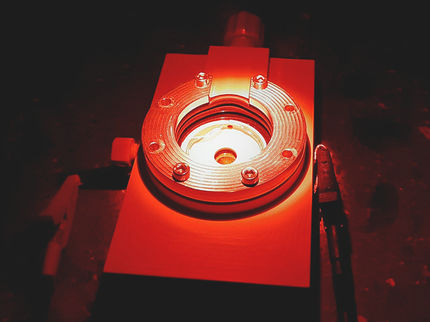Steroids control gas exchange in plants
Advertisement
Plants leaves are sealed with a gas-tight wax layer to prevent water loss. Plants breathe through microscopic pores called stomata (Greek for mouths) on the surfaces of leaves. Over 40% of the carbon dioxide, CO2, in the atmosphere passes through stomata each year, as well a water volume twice that of the whole atmosphere. As the key conduits for CO2 uptake and water evaporation, stomata are critical for both our climate and plant productivity. Thus, not surprisingly, the total number and distribution of stomata are strictly regulated by plants to optimize photosynthesis while minimizing water loss.
The mechanisms for such regulation have remained elusive. New research from Carnegie's Zhiyong Wang, Tae-Wuk Kim and Dominique Bergmann demonstrates that certain plant steroid hormones, called brassinosteroids, play a crucial role in this regulating the number of stomata in the leaf. Their work is published by Nature.
Brassinosteroids are found throughout the plant kingdom and regulate many aspects of growth and development, including inhibition of photosynthetic genes when there is insufficient light for photosynthesis. Mutant plants that are deficient in brassinosteroids show defects at many phases of the plant life cycle including reduced seed germination, activation of light-induced genes and growth behavior in the dark, dwarfism, and sterility.
Wang, lead author Kim and their colleagues Marta Michniewicz and Bergmann set out to determine brassinosteroid's role in stomatal development. They found that mutant plants that are brassinosteroid deficient, or lack sensitivity to brassinosteroids, were observed to have excessive and unevenly-distributed stomata, leading the team to ask what role this class of hormones plays in the developmental process for these crucial plant organs.
Wang and his colleagues had previously determined that when brassinosteroid binds to a receptor on the surface of a plant cell, it initiates a chain of signal transduction that results in certain genes being turned on or off within the cell's nucleus. But this research showed that one of the proteins involved in this chain, called BIN2, is also involved in a completely separate pathway that regulates the development of stomata.
The team found that BIN2--which is similar to a protein found in humans--had an inhibiting effect on a key protein in the stomatal-development regulatory system. This second protein is called called YODA and it also has a similar counterpart in humans. In the absence of brassinosteroid, BIN2 inhibits YODA, which allows stomata formation. When brassinosteroid is present, it causes inactivation of BIN2, and this allows YODA to inhibit stomatal development.
"This research supports the role of brassinosteroid as a master regulator that coordinates both physiological and development aspects of plant growth," Wang said. "Because brassinosteroid is one of the best-understood chemical pathways in plant physiology, these results could help scientists who are researching many other plant cell systems as well."



























































